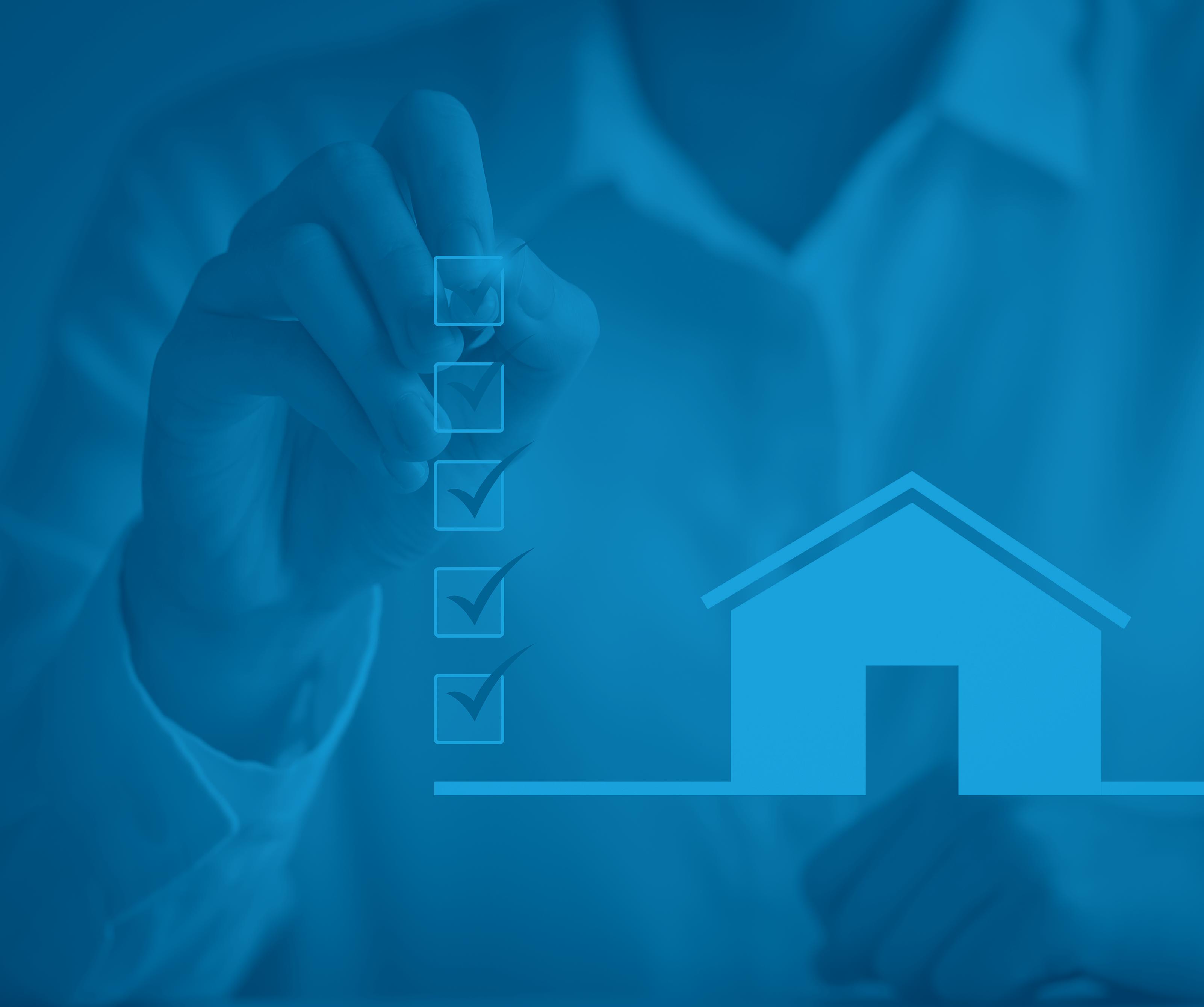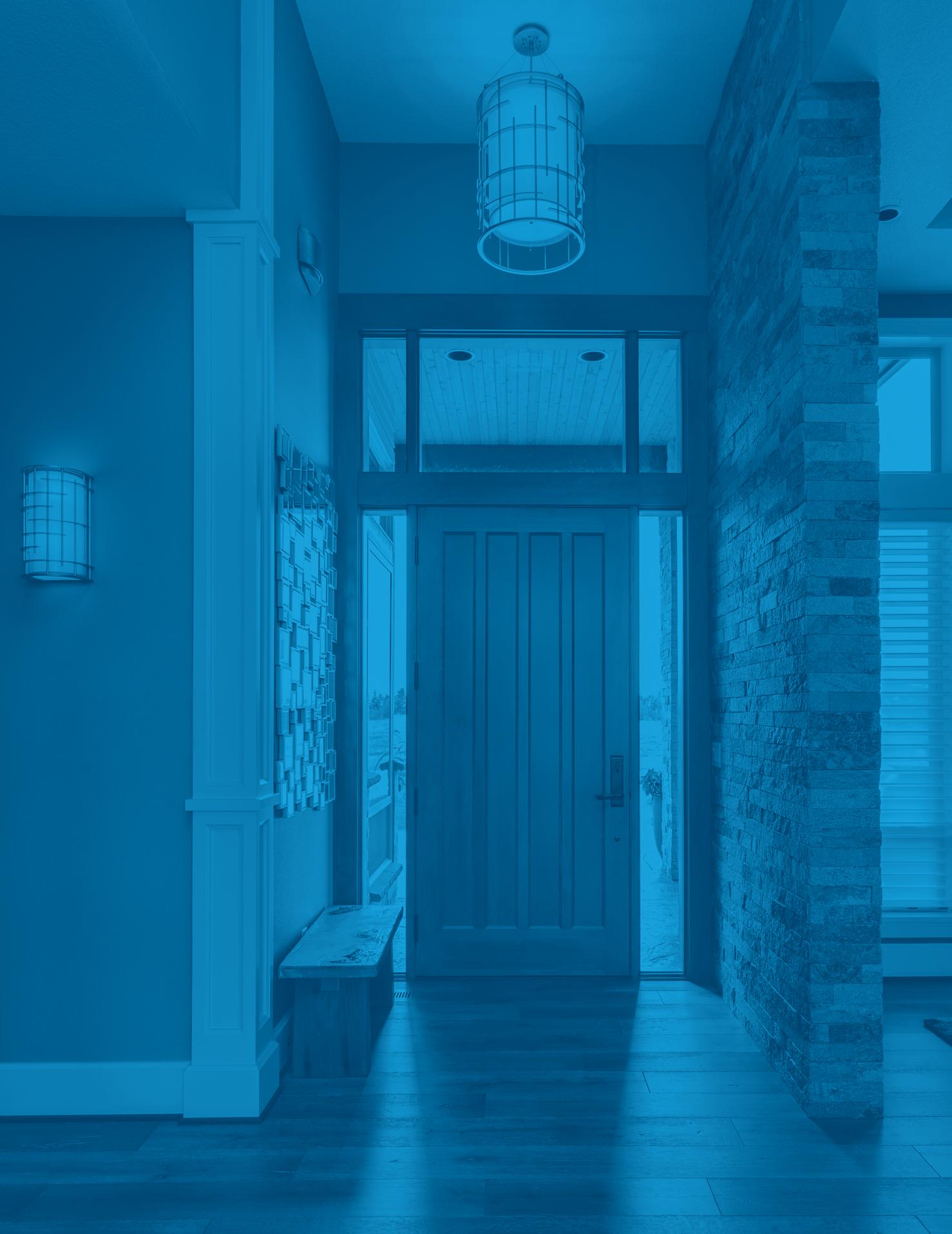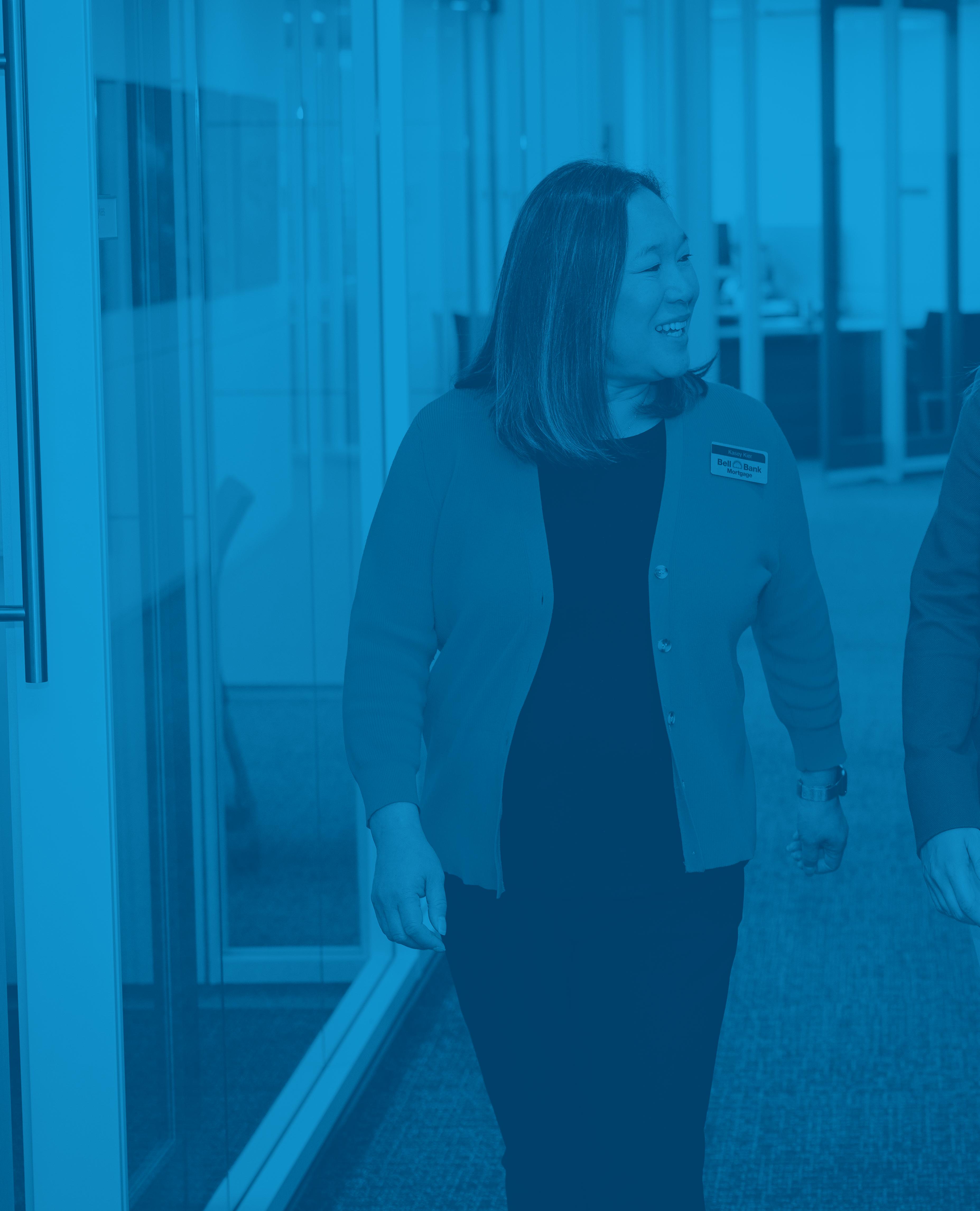

MEET YOUR LOAN OFFICER
Our loan officers are here to act as your guide throughout the mortgage refinance process. Refinancing your mortgage can help set you up for a successful financial future. We want to make that transaction as smooth as possible.
THE ADVANTAGE
We are able to deliver personalized customer service with the resources of a local lender.
Borrowers will prefer working with us because of our:
Reliable Prequalification
Competitive Rates
Robust Menu of Loan Products
Transparent Communication
Dependable On-Time Closings


IT’S
NOT HOW LONG YOU STAY IN YOUR HOME, IT’S HOW LONG YOU STAY IN YOUR LOAN.
A mortgage refinance can be the right option in many cases. Refinancing your mortgage loan can help shorten the loan terms, lower your monthly payment, remove mortgage insurance, and more.
HOW OFTEN CAN YOU REFINANCE YOUR MORTGAGE?
Depending on the loan program, a mortgage loan may require a seasoning period before you refinance. In some cases, the borrower must have made at least six consecutive monthly mortgage payments on the loan being financed, and the refinance can occur no earlier than 210 days after the first payment is due. Check with your mortgage loan officer to learn more about your specific loan program.
TOP 5 REASONS HOMEOWNERS CHOOSE TO REFINANCE

A mortgage refinance can help you lower your monthly mortgage payment, change your loan terms, remove mortgage insurance, or withdraw cash for events such as home improvement projects. There will be times during the life of your loan when refinancing is a good idea, and there will be other times when it’s not the best option.
LOWER MORTGAGE PAYMENT
In some cases, switching to a different loan program can help lower your monthly mortgage payment. Refinancing to lower your payment may extend your mortgage terms, depending on the type of loan.
LOWER INTEREST RATE
Your mortgage interest rate is primarily determined by your financial and credit profile at the time of loan origination and current market interest rates. If interest rates are lower than they were when you originated your original loan, you may benefit from an interest rate refinance.
CHANGE FROM ADJUSTABLE-RATE TO FIXED-RATE
An adjustable-rate mortgage will fluctuate but a fixed-rate mortgage will maintain the same
interest rate throughout the life of the loan. An adjustable-rate mortgage generally starts with a lower than market interest rate initially but may increase over time. Refinancing to a fixedrate mortgage ensures the interest rate will stay the same for the duration of the loan term.
SHORTEN THE TERM OF THE LOAN
Mortgage terms come in a handful of different options. Usually, shorter loan terms carry a lower interest rate, and you’ll pay less interest over time. However, depending on the loan balance, a shorter loan term also may increase the monthly payment.
REFINANCE TO CASH OUT HOME EQUITY
If you have at least 20% equity in your home, you can refinance to withdraw home equity. A cash out refinance using home equity can be a convenient way to fund large expenses like a home renovation or to responsibly pay down debt. If you have another investment opportunity, consult a financial planner before moving forward with a cash-out refinance.
TYPES OF REFINANCE
RATE AND TERM REFINANCE
The most common type of refinance is known as a “rate and term refinance” or a refinance to get a lower interest rate or change the terms of the original loan. Homeowners may also refinance into a different type of loan program. For example, a first-time home buyer who used an FHA loan might benefit from switching to a conventional mortgage loan after they have had several years to build their credit and improve their financial profile.
CASH-OUT REFINANCE
Some homeowners may choose a cashout refinance to raise the balance of their mortgage loan to pay for other expenses. Not to be confused with a Home Equity Line of Credit (HELOC), a cash-out refinance involves originating a new mortgage for a larger balance than the original loan. In the case of a cash-out refinance, the monthly mortgage payment will likely increase to cover the cost of the larger loan. For a HELOC, the lender issues an agreed amount of money using the borrower’s equity in the home as collateral.
CASH-IN REFINANCE
A cash in refinance allows the borrower to lower their loan-to-value amount by making a payment toward the loan principal to potentially lower the monthly mortgage payment. A cash-in refinance is a great option for a borrower who has the funds available through a bonus, inheritance, or other source.
RENOVATION REFINANCE
When a home is in need of repair or remodel, renovation financing may be a better option than taking out a personal loan or using a credit card. With home prices on the rise, many homeowners are choosing to stay in their home longer and complete repairs or remodels through renovation financing, rather than shopping for a new, more expensive home that fits their needs. With a renovation refinance the cost of renovations is included along with the refinance of the existing mortgage, resulting in one convenient monthly payment.




BEFORE YOU REFINANCE

Before you make the decision to refinance your mortgage, complete the important checklist below.
DEFINE REFINANCE GOAL
Do you want to shorten your loan term? Lower your interest rate or monthly mortgage payment? Withdraw cash for a home renovation project? Defining your refinance goal will determine what type of loan refinance you will need.
LOCATE RELEVANT DOCUMENTS
A mortgage refinance is a new loan origination, and just like when you financed your original purchase you are going to need all of your important documents. Get your bank statements, W2s, pay stubs, government-issued identification, and other documents together ahead of time to streamline the process.
COMPARE THE ALTERNATIVES
For example, if you are interested in a cash-out refinance to pay down other debt, explore alternative options like payment plans with your credit cards or a student loan refinance and weigh your options before settling on a cash-out mortgage refinance.
CALCULATE THE “BREAK EVEN” POINT
One of the most common reasons to refinance is to lower the monthly mortgage payment or overall cost of the loan. Since a refinance will be a new loan origination, make sure to calculate the “break even” point and determine how long it will take to start saving money with additional closing cost expenses that come with a mortgage refinance.
THE REFINANCE PROCESS
Once you’ve decided you’re ready to refinance and have met with a loan officer to determine the type of refinance you will need, you’re ready to get started!
1. COMPLETE THE REFINANCE APPLICATION
Just like when you purchased your home, you will need to complete a mortgage application with information about yourself and the home. This can be completed through the loan officer’s website, bellbankmortgage.com, over the phone, or in person.
2. GET A LOAN ESTIMATE
Lenders are required to provide a Loan Estimate (LE) within 3 days of receiving your loan application. The LE estimates the fees and closing costs that will be associated with your mortgage refinance and will summarize your new loan terms and monthly payment.
3. CONSENT TO PROCEED
A Notice of Intent to Proceed with Loan Application is a letter signed by you to grant the lender permission to proceed with your application.
4. SUBMIT DOCUMENTS
Paperwork please! You’ll need signed disclosures, bank statements, W2s, tax returns, and more. Getting these documents together ahead of time will help speed this up.
5. GET A HOME APPRAISAL
Even though you had a home appraisal when you bought your home, the value might have changed. The refinance appraisal may take into consideration any upgrades you’ve made to your home and any home value appreciation that has occurred in your market since your home purchase.
6. RECEIVE A FINAL DECISION
Once you’ve finished everything above, an underwriter will review your complete application and issue a final decision.
7. CLOSING DISCLOSURE
A Closing Disclosure is required as part of the process 3 days prior to close for all signers.
8. CLOSE YOUR LOAN
When you receive final approval, you’re ready to close. You’ll have to sign all of your paperwork and pay any lender’s fees at this time.
ABOUT THE APPRAISAL
Once you’ve decided you’re ready to refinance and have met with a loan officer to determine the type of refinance you will need, you’re ready to get started!
Buying a new home or refinancing your current mortgage will typically require a home appraisal to determine its fair market value for lending purposes. The appraiser operates independently to make an unbiased decision.
An appraisal differs from a home inspection in that an appraiser determines the value of the house and the inspector determines what repairs are needed and what they will cost. The appraiser will compare the value of the home to be refinanced with the value of other similar homes recently sold in the area, and
give the buyer, seller, and lender a detailed report on what value was calculated.
In most cases, the homeowner will be responsible for the cost of the appraisal. The final appraisal report is based on the size and condition of the home, details about any renovations you’ve completed, notes about the changes in the value of surrounding properties, maps and photographs as needed, and the detailed market analysis based on comparable homes as well as many other factors.
A low appraisal might prevent the refinance transaction from moving forward. Other options apply based on the loan program, and the homeowner should consult a real estate professional for further information.


REFINANCE HELPFUL TIPS

1. BE PREPARED
Gather important documents ahead of time. Meet with a loan officer and review what type of refinance will help you achieve your goals.
2. KEEP UP WITH YOUR CREDIT SCORE
A refinance is a new mortgage origination. Be proactive about maintaining a good credit score, be responsible about paying down debt, and avoid opening new lines of credit.
3. USE RISING HOME PRICES TO YOUR ADVANTAGE
In some cases, your home’s value has appreciated since you purchased it.
4. CONSIDER PAYING MORE
The terms of your loan will influence how much interest you pay over time. A shorter loan term will cost less in mortgage interest over time, but you’ll have a higher monthly payment, because you are paying off the balance of the loan in a shorter amount of time. Depending on your budget, the higher monthly payment may be worth the lower interest rate.
GLOSSARY
MORTGAGE TERMS
PRINCIPAL – The portion of your payment that is applied to pay down your mortgage.
INTEREST – A charge for the use, or loan, of money. The interest is calculated on unpaid principal balance and remaining term of the loan.
TAXES – The county assessor charges property tax based on the valuation of your home.
HOMEOWNERS INSURANCE - This pays for losses from certain hazards, including fire. This standard insurance pays for replacement costs based on actual cash value.
FLOOD INSURANCE (if applicable) – This pays for physical losses to your structure and belongings in cases of flooding.
HOMEOWNERS ASSOCIATION (HOA) DUES – Fees paid by homeowners within a community of homes, condos, townhouses, or planned unit developments (P.U.D.). HOA dues are collected to cover the costs and maintenance of communal areas to the property.
MORTGAGE INSURANCE (MI)– Depending on your loan program or the amount of your down payment, you may be required to have MI. Because loans with small downs payments involve substantially more risk for the lender, they require insurance as a hedge against borrower default. The cost of MI varies according to your type of loan, down payment and credit score (as well as other factors). FHA Loans charge a fee for life-of-loan mortgage insurance, called Mortgage Insurance Premium (MIP). VA Loans charge an upfront Funding Fee in lieu of a monthly mortgage insurance fee. USDA charges an upfront Guarantee Fee and life-of-loan mortgage insurance called Mortgage Insurance Premium (MIP).
PRIVATE MORTGAGE INSURANCE (PMI) – is a type of mortgage insurance you might be required to buy if you take out a conventional loan with a down payment of less than 20 percent of the purchase price. PMI could be required on a conventional refi depending on loan-to-value program requirements.
CLOSING COSTS
APPRAISAL FEE – Conducted by an independent appraisal company, this pays for a statement of property value for the lender. You will receive your own copy.
CREDIT REPORT FEE – This covers the cost of the credit report that is run by an independent credit-reporting agency and is used
to prequalify you for a loan and to underwrite your completed loan application.
ESCROW ACCOUNT – If you choose to have an escrow account, have a government funded FHA or VA loan, or if your down payment is less than 20%, the lender may require you to establish an account held in trust for you by the lender to pay the costs of your property taxes, insurance or Homeowners Insurance. Your monthly payment will include the loan Principal Interest, Taxes and Insurance (collectively P.I.T.I).
LOAN DISCOUNT – Often called discount points, a loan discount is a one-time charge used to buy down your specific transaction’s interest rate.
TITLE CHARGES AND DOCUMENT PREPARATION – The title company may charge one-time fees for a title search and examination, document preparation, notary fees, recording fees, courier fees, and a settlement or closing fee, a lenders title policy, which protects the lender against losses due to defects on title, and a buyer’s title policy, which protects the borrower against defects on the title. There could be other fees charged by the title company as well.
PREPAID INTEREST – Amount accrued on a daily basis from the date of loan disbursement to the due date of your first loan payment.
TAXES AND HAZARD INSURANCE – You will be expected to pay for property taxes upfront. In addition, you may be required to allocate property taxes and property insurance (may include homeowners, flood) into a reserve account, called an escrow account, held by the lender.
TYPE OF LOANS
STANDARD CONVENTIONAL:
Conventional loans come in a variety of loan terms, and typically allow you to make a slightly smaller down payment. However, you must have a credit score of at least 620.
FEDERAL HOUSING ADMINISTRATION (FHA): FHA loans are backed by the Federal Housing Administration, an agency under the jurisdiction of the U.S. Department of Housing (HUD). FHA loans are insured by the FHA, which means that the owners of your mortgage are protected against loss if you default on your loan.
UNITED STATES DEPARTMENT OF AGRICULTURE (USDA): A USDA loan is a mortgage or grant program from the U.S. Department of Agriculture that helps lower income residents of rural areas purchase or repair a home.
When you
apply for your
loan,
you will receive a Loan Estimate that will explain the closing costs in detail. At loan closing, you will receive a Closing Disclosure summarizing your actual loan costs and fees.
VETERANS AFFAIRS (VA): The Department of Veterans Affairs offers loan programs to help servicemembers, veterans, and their families buy homes.
Subject to credit approval. Program guidelines are subject to change without notice. Other restrictions apply. This is not a commitment to lend. Bell Bank Mortgage does not provide investment, legal or tax advice. The information provided in this advertisement is intended for informational purposes only.
